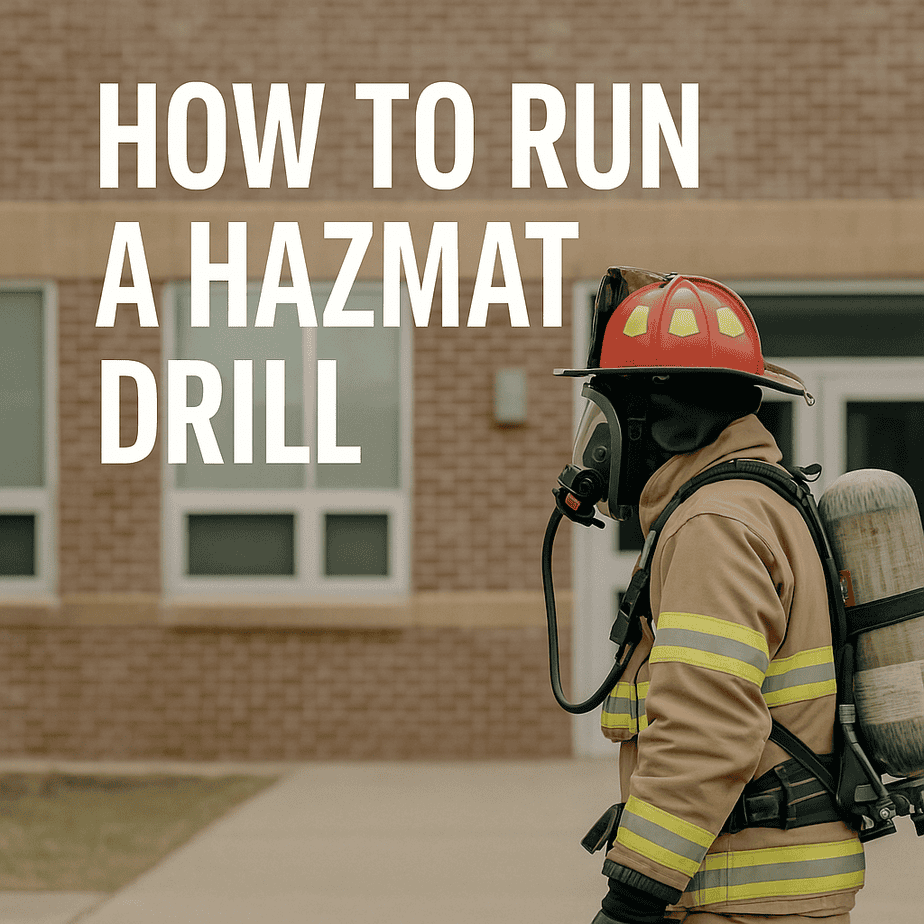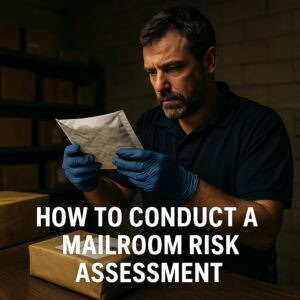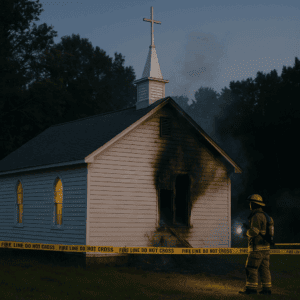Hazmat Drills Are Still a Mystery for Most Schools
Ask most school staff what to do during a hazmat drill, and you’ll get blank stares or a confused mix of lockdown and fire drill responses.
That’s a problem.
Hazmat drills aren’t optional anymore, and done wrong, they give you false confidence and put your people at risk.
What a Hazmat Drill Actually Is
Hazmat drills, specifically shelter-in-place drills for hazardous materials, are designed to protect people inside the building from airborne dangers outside.
Think gas leaks, nearby industrial accidents, or chemical spills.
In Texas, public schools are required to conduct at least one shelter-in-place drill per year, covering either severe weather or hazardous materials.
This is outlined in the Texas Administrative Code 19.103.1209.
What It’s Not
A hazmat drill is not:
- A fire drill (you don’t evacuate)
- A lockdown (you’re not hiding from a threat)
- A chance to just go through the motions
This drill is about sealing the environment and staying put. That means keeping contaminated air out, not running around, or gathering outside.
What Schools Keep Getting Wrong
- Leaving HVAC systems running: Pulls contaminated air into classrooms.
- Using poor shelter locations: Big windows, bad sealing, or rooms with no supplies.
- Staff don’t know the steps: Especially subs or new teachers.
- No real debrief afterward: So the same mistakes happen again next time.
What a Good Hazmat Drill Actually Looks Like
1. Coordinate With First Responders
Before running anything, get with local fire and emergency management. They’ll help validate your plan and may already have expectations in place. For example, FEMA’s emergency planning guidance for schools recommends syncing your plan with local hazmat capabilities.
2. Identify the Right Shelter Locations
Use rooms that:
- Can be sealed
- Have minimal windows
- Are stocked with basic supplies (e.g., duct tape, first aid, communication devices)
If possible, pre-stage a Shelter-in-Place Annex in your emergency ops binder with maps and staff assignments.
You can see an example format in our article on how to run a school shelter-in-place drill for hazmat.
3. Practice the Real Steps
This isn’t a pretend drill.
A real hazmat drill means:
- Turning off HVAC (or practicing the shutoff procedure)
- Moving into sealed rooms
- Using the actual intercom message that would be used in a real event
- Giving time for staff to follow signage or role cards
And yes, you should time it and log it just like any other drill.
4. Keep It Simple, but Real
You don’t need to simulate a chemical spill to make the drill work. The goal is to:
- Run the actual procedures
- See how long it takes
- See what gets missed
- Debrief right after
This is covered in more depth in our Core Drills – Common Natural Disasters for Schools guide, which includes hazmat scenarios, templates, and timing logs.
Wrap-Up: Train for Reality, Not Just Compliance
Hazmat drills aren’t glamorous. But when the gas line gets hit during a construction project, or there’s a chemical fire at a nearby plant, you’ll be glad you didn’t fake it.
Make it real. Seal the building. Time the response. Fix what doesn’t work. Then next time, it won’t be chaos, it’ll be controlled.
Want Drill Templates That Don’t Waste Time?
We built a full guide for school leaders who need practical, ready-to-use drills that cover more than just fire alarms:
Get the Core Drills – Common Natural Disasters for Schools
It includes:
- Hazmat drill scenarios
- Timing and evaluation logs
- Shelter-in-place checklist
- Rorms
Instant download. No guesswork.






